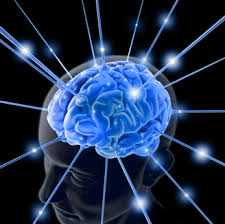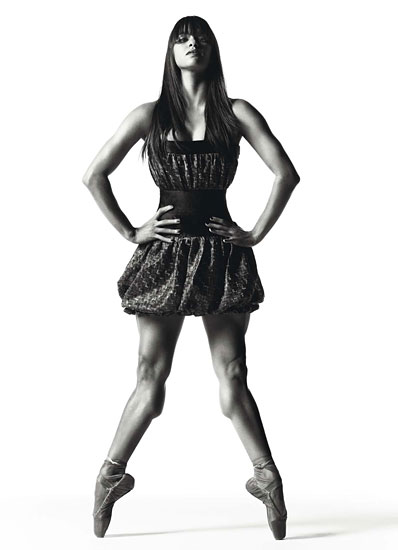
Sometimes when I am teaching and passionately explaining an element of the technique, I look up to see my students watching me like I was a cable television show. As I walk around the room observing them, often I will spot someone falling back, or struggling to balance and they are looking at me as if to say, “What’s going on? Help, save me!” I look back flatly and say, “Wow, what are you going to do about that?” It might sound insensitive, but it’s actually an effort to get them to realize that they not only have the information to “save” themselves, but the responsibility to try to solve the problem on their own. Their passivity towards finding a solution vexes me. The idea that they are in a sense waiting, expecting me to fix the problem in their bodies makes me adamant not to become an enabler to that passivity. You might be saying to yourself “Well, isn’t that your job? You are the teacher, it’s your job to fix them” In a sense you are right, however my primary charge is to teach them how to fix themselves by giving them the tools they need, it is not to do the mental work for them.
Dance, like life is a series of problems that need solving. Dance is a physical puzzle, if you can’t fall in love with problem solving you will never be able to truly fall in love with dance, or for that matter life.

Over the 15 or so years that I have been teaching I have observed a slow shifting in the way students approach the work. There is a generational shift that has taken place. I have found that today’s students have a difficulty inserting, and asserting themselves into the process of their development. This issue is not so much the comprehension of the information (intellectually and conceptually they are more advanced) nor is it the translation of the concepts from thought to action (making a thought a movement). The problem is the process of translating, the thinking their way systematically through the technique with consistency. Today’s student are so used to information (solutions, answers) being delivered to them via two dimensional computer screens where they merely have to point and click to retrieve possible solutions that they are sorely lacking the ability to work things out independently. You might be able to Google, Yelp, Ask almost anything, but it won’t help you stand up and pirouette. The body just doesn’t work that way. Your brain is the original computer, and your body is like a vessel that needs to be piloted. You sole pilot of your vessel. Sometimes I feel today’s students are trying to dance in autopilot before they have learned to manually fly their plane, or they dance like they are playing a Wii, following along. They are seeking the shortest, quickest, easiest way to solve the physical puzzles of their bodies, and the reality is…
“There is no App for that, YOU are the App!”
“You are your own Search engine; all the information is in there you just have to access the appropriate files to successfully complete the task.”
To be fair, it is not quite 100% their fault, (no, I am not making excuses for them) This generational issue. These students are growing up in intrinsically different world and set of circumstances then those of generations before them. People who grew up before the technical revolution process information differently. The two brains are just built differently, literally.
Over the last 30 years the world has been drastically altered by the technological advancements that we all enjoy. The world, once shrunken by air travel is now even smaller with information at one’s fingertips, and the ability to have eyes around the world in real time. Technology has not only changed the way we disseminate and receive information, it has vastly altered our relationships and social interactions. But these are the obvious effects of modern technology. There has been a more insidious effect that modern technology has wrought. Let me explain. There was a time not so very long ago when people held numerous names, addresses and telephone numbers in their heads, a time when children were drilled on the memorization if their parents names, their addresses and telephone numbers just in case they got lost. It was not unusual to solve problems with brain power, legwork or by connecting the dots of information, with simple deduction and sometimes, basic common sense. This was also the time when you had to be at home to receive a call or wait returned to check an answering machine (pre-remote retrieval). It was also time when you had to honor your commitments, if you made an appointment to meet someone, you had to show up, as there was no way of getting in touch with someone in transit to cancel. In a time pre-cell phone, pre-email and Internet human beings were quite independent creatures. Today, in a world were any and everything is a touch or click away, it seems that all this “progress” in a way has “regressed” us in terms of our ability to independently hold certain information in our heads, or rely on ourselves to figure things out. And why should we when we can literally hold a solution to almost everything in the palm of our hands? In addition our diminished capacities to independently problem solve, our ability to independently trouble shoot has all but dissipated. The reality is, the Modern brain looks vastly different then that of a brain 20 years ago.
 MAPPING THE BRAIN
MAPPING THE BRAIN
When we are born we are born with a certain number of synapses (pathways by which information is transmitted). At birth, the number of synapses per neuron is 2,500, but by age two or three, it’s increases to about 15,000 per neuron. Here’s the thing, where there is an exponential increase, the brain eliminates connections that are seldom or never used, this is a normal part of brain development. Science has revealed that there is what is called, “Windows of opportunity” this is when synapses can be developed and strengthened. These are sensitive periods in children’s lives when specific types of learning take place. For instance the neurons for vision begin sending messages back and forth rapidly at 2 to 4 months of age, peaking in intensity at 8 months. It is no coincidence that babies begin to take notice of the world during this period. Now think about today’s parents introduce electronic devices to small children sometimes as young as 6-8 months old (be they for entertainment or education) with single parent homes or both parents working the DVD has greatly replaced the time that parents read to children, and the prevalence of video has all but eliminated the need for children to use their imagination to visualize their favorite characters, today their “imaginations” are 2 dimensional and lit LED bulbs. Therefore the visual stimuli that help create and strengthen the visual synapses today are greatly different from the stimuli of the past. Since the brain learns to respond and relate to what is comes in contact with (and is less familiar to information that is seldom encounters) is stands to reason that we are creating a brain that is wired differently then those of the past. The same applies to the way we learn to work through problem solving, with the advent of the Internet and search engines the way in which problems are solved today has been revolutionized: Ask, Point, Click and within seconds hundreds of possible solutions appear. Once the information is obtained there is no reason to actually store it in our heads because all we need do is click again and it will be saved and will be forever just a click away. Hence the modern brain looks and functions differently than the brain of 20 years ago.
Technology has created a world, and now a new generation for whom “shortcuts” are a way of life. We are all become accustom to the hyper speed of the modern world. We get irritated when an Internet page takes to long to load, or a subway creeps through a tunnel, or you have to wait 5 minutes for your fast food French fries to come out of the grease cooker. True, the speed of life is easy to get accustomed to, but if you are old enough to remember when Snail Mail was the only mail, or to research something you would have to go to the library, battle the Dewey Decimal System and the stacks, and if you wanted to have someone’s telephone number you either consulted the one ton phone book or pay a fee for 411, then there is something within you that remembers what it was like have to wait. If you are a child of the tech-boom then you are just pissed and irritated!

Technology has rendered us all impatient and for lack of a better term, Lazy Brained. For those of us raised in a pre-technology era we are experiencing a sort of Alzheimer effect, we can no longer remember those telephone numbers and addresses we once held in our heads and have to consult our mobile phone. As we adapt to the rapidly changing technological landscape, in our struggle to keep up, we must leave things behind. We have to; the world is moving faster, the immediacy of today demands that we operate a certain way within it. So our embracing technology has results in a fading of skills that were once necessary, now rendered useless they wizen like a of kind of like the appendix. For those born in this era, it is not so much the loss of skills, but the fact that those skills never developed. The Generational Lazy Brained Effect is glaringly evident in certain areas. Generally it is not a problem as most things in the world have progressed with, and through technology and so they are complementary, i.e. there are computers in the classrooms, and the internet is used as a research tool, files and records are now all computerized. However the t’ruth is we have figured out how to truncate almost everything we do, travel, getting information, cooking, weight loss, relationships, youngsters even develop are a younger age! Albeit there are a few things that still take the same amount of time and we have not been able to alter, and the is, it still take 9 months (give or take) to have a baby, and it still takes about ten years to make a dancer (give or take). And they are both done in relatively the same ways that they have always been done (give or take). The body- the way it learns takes the same amount of time now as it did in the 1700’s.

The Lazy Brain and Ballet (Dance)
Ballet is a technique that is centuries old and for the most part is still taught in 2011 the way it was in the 1800’s. Though the aesthetics, functionality, and facility of the body may be vastly different from those of the past, the rules if the technique are the same. Add to that, the (mentally and physically) body still develops and learns in the same way, and at the same rate, and the kinesiology and the physics of the form are still the same. Over the last few years I have been convinced that because the students (and their needs) are changing so rapidly due to technology, that I as a teacher must shift to meet them where they are. I would I have to create modern references to help students connect and relate to the origin of the ballet of Checcetti, Vagonova and The French and Royal Schools and make it relevant and relatable to their 21st century sensibilities.
Dance is a physical puzzle that requires the blending of technical mastery with spatial awareness, musicality, and artistry. To dance well one must multitask all those elements and make adjustments in split seconds. You must pilot your body. Although the modern brain can intellectualize dance concepts more quickly, the act of processing that information and translating that in to movement takes longer. I find that students can talk about dance (in theory or concept) all day long, they get it, but dance is not verbal, it’s physical. Year by year my students were becoming more and more passive in terms of approaching the work, instead of actively searching for the physical solutions to their problems they were happy to wait to be corrected. Most times they begin to move before thinking about what they need to or how to do it. They make the big shapes with no thought to detail, quality, or consistency. Often, instead of trying to make adjustments on their own, after experiencing a problem they would be quick to ask, “I’m falling back, what should I do?” where the answer should obvious because it’s a bit of common sense (bring your weight forward) but also because the information had been reiterated numerous times, somehow without verbal and constant prompting the concepts eludes them entirely. It lands but does not stick or permeate, they do not take ownership of the information, and instead they save it to a file, but forget what they saved it under, or where, and simply forget to open the file when they need it.
I find today’s students tend to want to simply get through something as opposed to really investigating how to get through it, thereby learning and developing the technique. They tend to seek externally (looking towards the teacher) for the solution that is quick, and easy. They have to be prompted to independently query themselves about possible solutions (the answers to which has often already been presented to them in class repeatedly). In the studio like in life they are seeking the shortcut. It’s not that they are wholly uninterested in actually learning; I think the real issue is how much effort (mental and physical) it takes to apply the solution that taxes them. I think when the reality of amount of the mental and physical rigor hits them, the ante is a bit too high and they bail out on themselves. This is when they start to try to negotiate and haggle with themselves, thinking, “There has to be a way around this.”
Unfortunately, when dealing with the body in this capacity, passivity and shortcuts do not exist. The process of learning, especially when training the body takes time. In this instant gratification based world we live in where most things can be obtained in shorter periods of time, the biological clocks of today’s younger generations run much faster. They are impatient and restless, and when things take too long they get frustrated and lose interest. In the world of technology there usually is a way to get things done faster, something you simply download, sit back wait for to run. Well the body doesn’t work that way. There simply isn’t mental or physical App for this!
I realized that I was going to have to help them to create the necessary synapses for them to approach the work.

WHAT TO DO:
I have accepted the fact that one of my roles as teacher now it to teach my students how to “think”. The first thing I had to do was get them off of their mental butts! Here are some tools I found very effective in getting their brains in the game.
Ask Don’t Tell:
I stopped giving out the answers (on how to fix things or properly execute) this enabled their passivity instead I started asking them! When I started you could have heard crickets in the middle of New York City! Then when they realized that I wasn’t just and information booth they could saunter up to and get the snippet they needed, they started to check in. After teaching certain concepts, or technical elements, and reiterating several times, when I revisit them I ask “Now, how are we going to get this done?” or “What are we going to think about when we do this?” For a while it is the actualization of a racist joke in the making “How many students does it take to explain a Fondue?” and at first it usually took about 3-4 students (and some prompting) but eventually you get more hands and an eagerness to tell. It makes them responsible for the information.
Do it Yourself Corrections:
Another tool I used to get their brains fired up was to make them build their own corrections. I ask “what is wrong with that, why didn’t that work?” generally they have a vague idea of what went wrong, so I ask them “based on what we have been working on how would we fix that?” If they are stumped, I ask the class to weigh in. Let me tell you kids might be passive about fixing themselves, but they are always eager to tell someone else what’s wrong with them! Of course they have to be respectful, supportive and helpful, and this gets them using their eyes to deconstruct and understand and gets their brains in the game.
Well-Laid Plans:
One the keys to effective dancing, is being able to in a sense “plot” your way through a combination and have a plan for the parts that will give you trouble. By assessing each element and the transitions between them, you can make certain that not only you are prepared for the technical requirements to execute the combination, but you can also prepare for what your personal issues and trouble spots will be, timing and dynamics (speed and inertia) can throw you off and change the simplest of movements. When presenting combination I will “plot the course” for them by step by step verbalizing what they might be thinking about in every moment – essentially speaking the internal monologue that takes place as we dance. As they become familiar with this process of breaking down the combination (technically, rhythmically, musically) I give them a moment before exercises to do it on their own. Before they do a combination I always remind them to plot their course, or make a plan (of execution)
Your Body is not Problem It’s Your Mind
Since your brain is the original computer, if you enter the information correctly and completely, and you understand all of the components that make up an element of movement, your mind can (if you get yourself out of the way) flip it to the left, reverse, retrograde or change the facing in space without too much drama, but trick is you have to use your brain. The brain in also the GPS for the Body, if you put the right directions in you will get to your destination. If you are vague, drive straight, turn, turn again… you will be lost. The more precise you are, the more details (with technical information, musicality, rhythm, body facings, port-de-bras, quality) the better and more accurate your results.
When something is not working I often ask students “What are you thinking?” It’s a layered question, because if they can’t answer—well then that’s a huge reason why it wasn’t working. If they can answer, you will often be able to show them why the step failed. i.e. when people try to pirouette, they think turn, so they often spin around perhaps with to much force and in a poor position, when someone says “I was thinking turn” it’s clear because that’s what they did, they spun around, but they did not pirouette. When you ask them to think about balancing—the results are different for a number of reasons, first in order to balance you have to maintain both your center and your position, already those two things are resolved, the other thing is when you think about balancing, going into the revolution you are more mindful to not push yourself off. Getting students to redirect their focus is a key factor in getting results, and it makes them in engage with a mental direction and clarity!
Teachers, These are some of the tools that I use to try to get my students to think about the body, dance, and movement differently and to get them to use their brains in the fashion that will support them getting this old world art form done in modern times. I hope they work for you as they have worked for me. Students, you can use these tools on your own even if your teacher is not asking these question, you can take them into all of your classes to support your work!!! Good luck and I would love to hear any feedback on results if you try it out!













